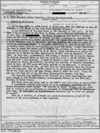MACV initiated its 11th Campaign, Summer-Fall 1969, which would last until 31 October. During the campaign the conduct of operations was increasingly turned over to the ARVN, and U.S. troops withdrew in greater numbers. American troop strength had peaked at 543,400 in April 1969, and would drop to 505,500 by mid October.
More scattered than before, enemy attacks were concentrated on RF/PF and ARVN positions to thwart the Vietnamization progress, and embarrass the Thieu administration.
U.S. combat deaths dropped in the early Fall, as U.S. units switched to small unit actions. The trend was not constant because U.S. troops deaths which had fallen well below l00 a week in the fall, would rise above 100 later in the year. |





